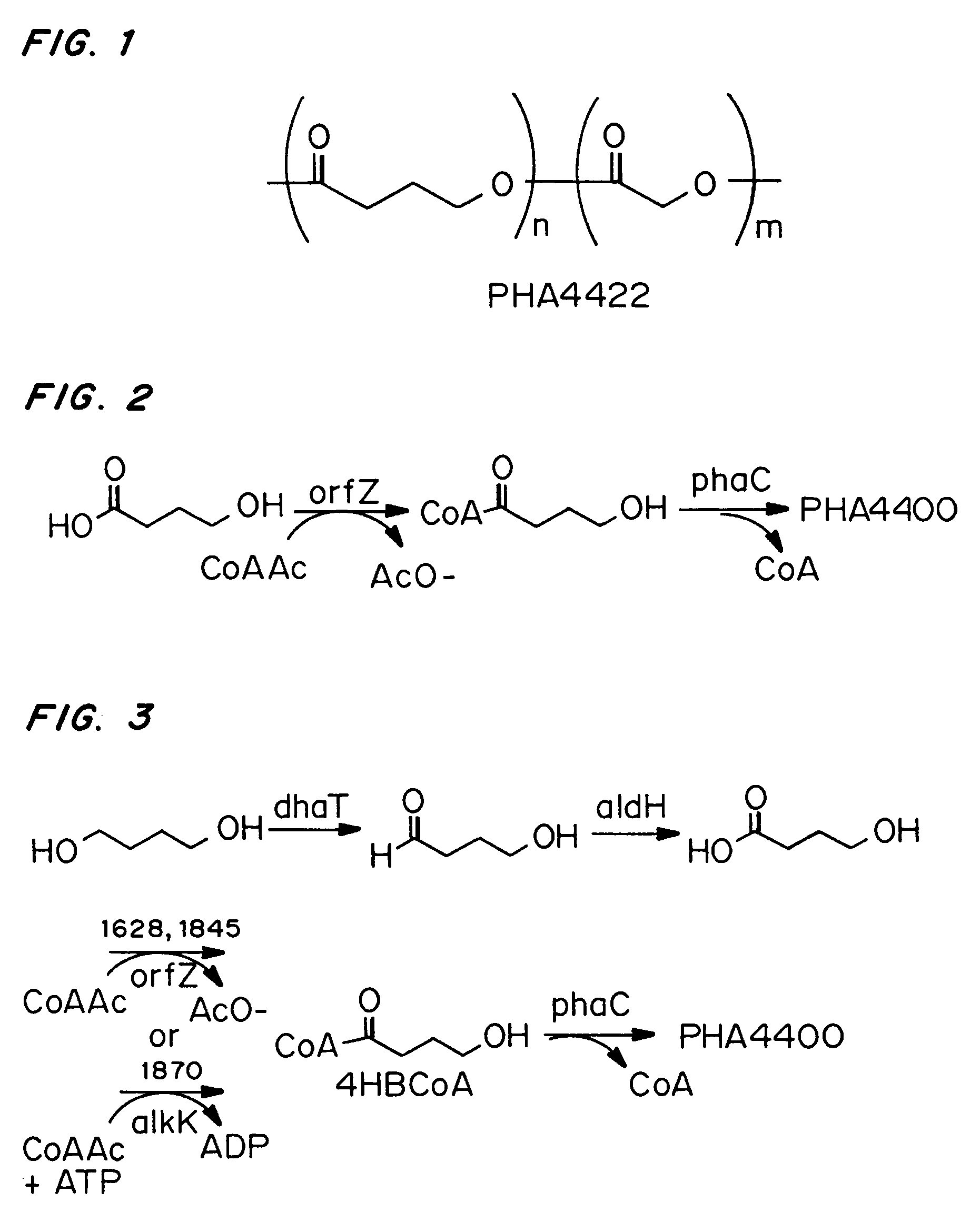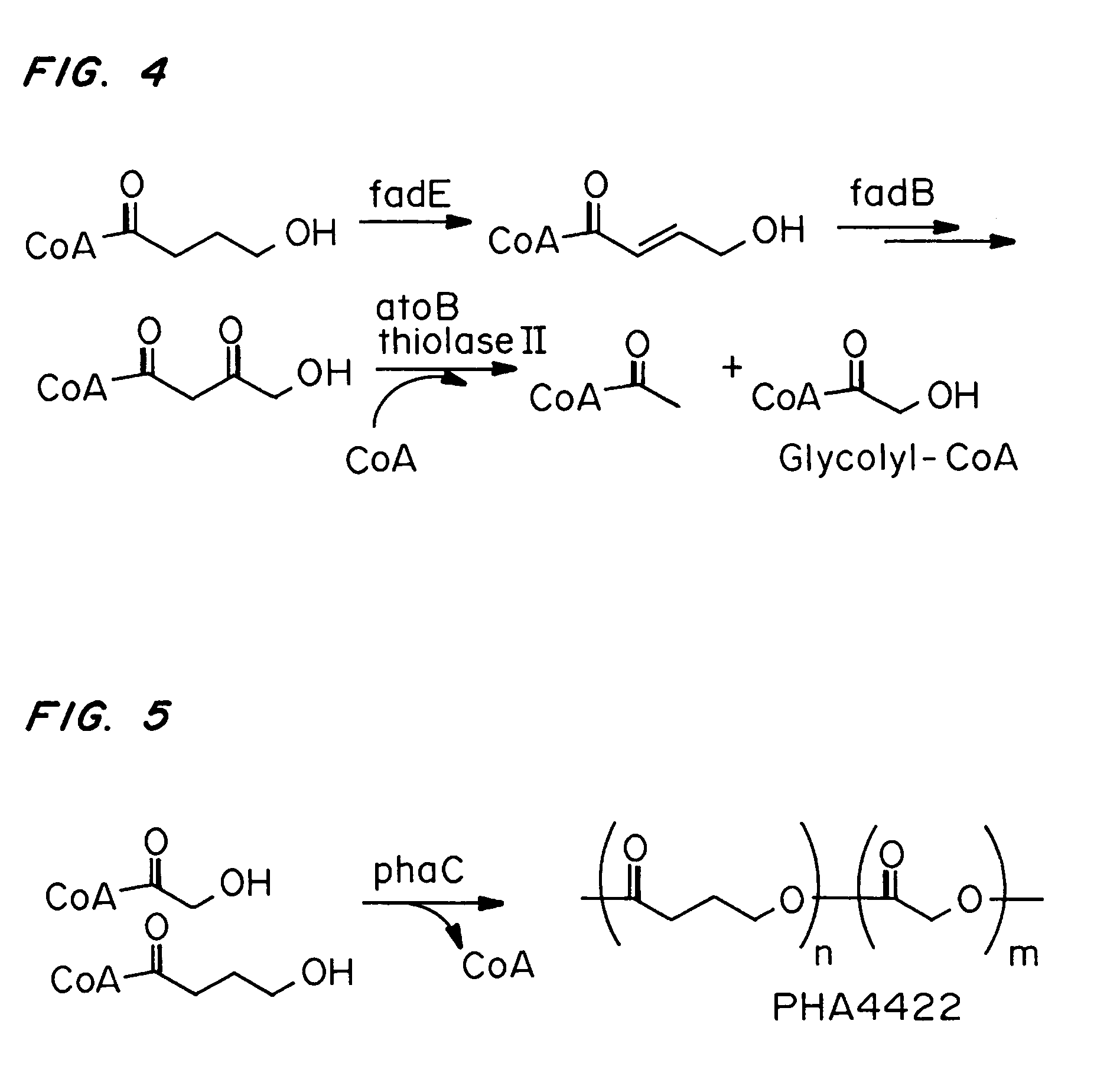Bioabsorbable polymer containing 2-hydroxyacid monomers
- Summary
- Abstract
- Description
- Claims
- Application Information
AI Technical Summary
Benefits of technology
Problems solved by technology
Method used
Image
Examples
example 1
Production of P4HB in MBX1928
Description of the Strains MBX1628 and MBX1928
[0060]MBX1928 is based on the wild-type Escherichia coli strain MG1655 (CGSC#6300) and expresses four inserted genes: aldH (aldehyde dehydrogenase) from E. coli, dhaT (diol oxidoreductase) from Klebsiella pneumoniae (Johnson and Lin, 1987, J. Bacteril. 169:2050-2054), orfZ (acyl-CoA transferase) from Clostridium kluyveri (Söhling and Gottschalk, 1996, J. Bacteriol. 178:871-880), and phaC (PHA synthase) from Ralstonia eutropha. The aldH and dhaT genes are inserted into the chromosome (along with the tetracycline resistance marker gene from transposon Tn10), and the orfZ and phaC genes are present on a plasmid, along with the kanamycin resistance marker from the plasmid pACYC177.
[0061]MBX1628 has the same inserted genes as MBX1928, except that it is based on the Escherichia coli strain LS5218 (CGSC#6966). LS5218 and MG1655 are closely related with the notable exception that LS5218 contains two mutations, fadR60...
PUM
| Property | Measurement | Unit |
|---|---|---|
| Fraction | aaaaa | aaaaa |
| Fraction | aaaaa | aaaaa |
| Fraction | aaaaa | aaaaa |
Abstract
Description
Claims
Application Information
 Login to View More
Login to View More - R&D
- Intellectual Property
- Life Sciences
- Materials
- Tech Scout
- Unparalleled Data Quality
- Higher Quality Content
- 60% Fewer Hallucinations
Browse by: Latest US Patents, China's latest patents, Technical Efficacy Thesaurus, Application Domain, Technology Topic, Popular Technical Reports.
© 2025 PatSnap. All rights reserved.Legal|Privacy policy|Modern Slavery Act Transparency Statement|Sitemap|About US| Contact US: help@patsnap.com


